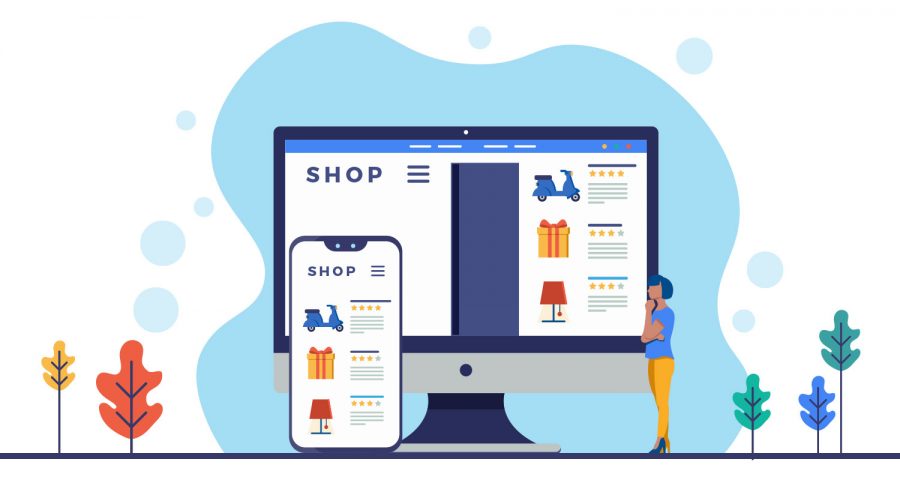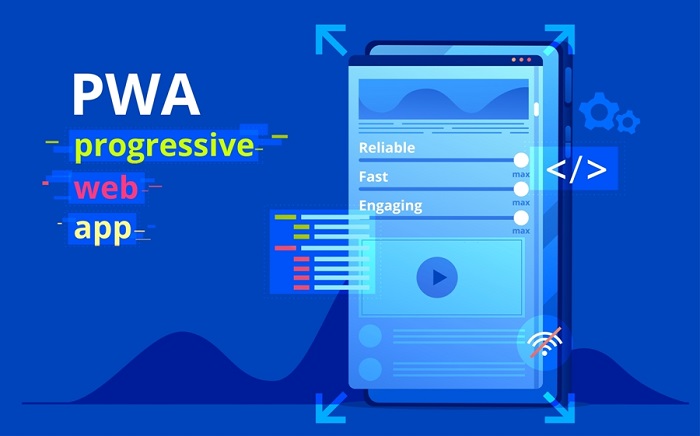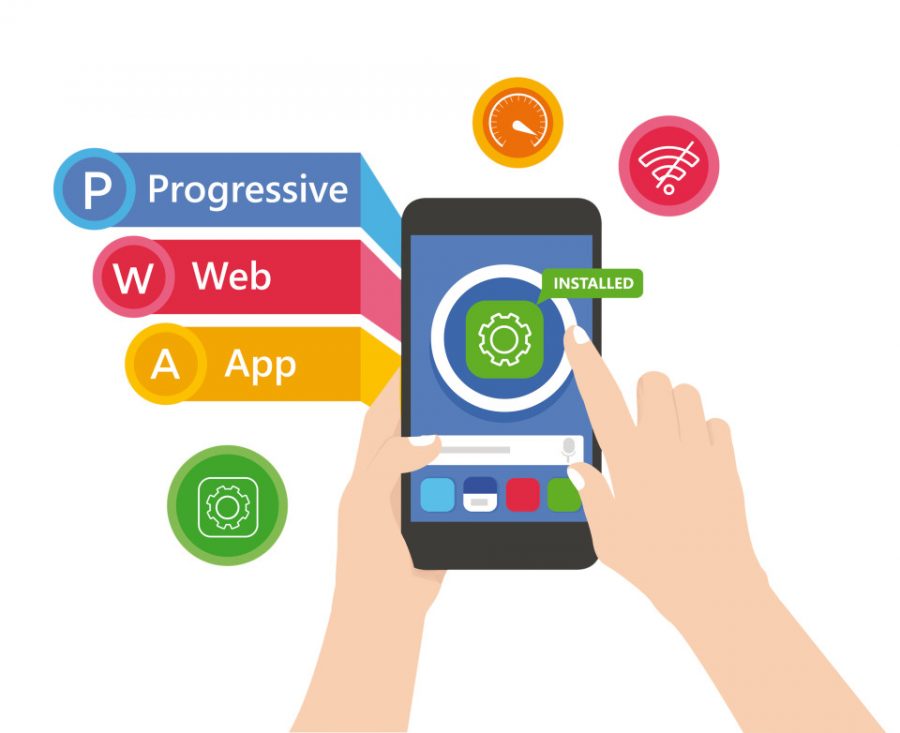PWA or Progressive Web Applications are solutions based on the web and utilize the native mobile application features with traditional website development to develop an engaging and consistent user experience (UX) for users. It does not matter if you access PWA from a smartphone or desktop device; it will feel like a typical website that you browse on the internet with some added advantages. Page load speed, responsiveness, and offline capability are some of its dominating benefits that make PWA stand out. However, there are many others which we will discuss further in this article.
PWA apps are not only responsible for attracting web traffic as it gets better ranking because of its enhanced search performance; they engage users for long which improves chances for converting them into leads and sales.
No Deployment on the App Stores
To use a native app, you first have to download it. You need to open an app store, search for the app, and download it. Without downloading and installing, you cannot use it. These limitations are more like a barrier in the path which restricts your reach to the potential audience.
Meanwhile, PWA apps are usable via mobile’s any modern internet browser. Therefore, it cut down the requirement to download the application from the store. Thus, it is a convenient option and does not require any space in a user’s phone memory. Also, if an individual wishes to install a PWA on their phone and doesn’t want to access it from a mobile browser, they can use the website for that purpose rather than the application store.

Why Developers and Development Agencies Give Preference to PWA App Development?
PWA development cut down the complexities and challenges of maintaining a smartphone application and take advantage of the mobile app’s capabilities. It results in increased performance and user engagement. However, in a typical scenario, one first has to access the application store, find the app, download, install and then open it.
Meanwhile, as soon a user finds it in the case of PWA, they can begin to use it immediately without any installation and configuration need.
After that, they will see a prompt telling them to install the application and switch to a full-screen version until the user returns to the app.
The businesses have gained impressive outcomes by launching their PWA applications, and we all know that numbers do not lie.
Architecture of PWA
The architecture of PWA consists of:
Service Worker
The service worker comes as an abstraction layer that connects the frontend and backend in a web browser. For making a connection with HTML page code, it represents a JavaScript file. All the handling of user requests happens on the service worker side and uses cache memory to store and access data. It implies that PWA will work in offline mode if the user loses internet connectivity or has an unstable connection.
Web App Manifest
The web application manifest is the JSON file that analyzes the primary parameters of a PWA. For instance, it tells the app’s name in a web browser, app icon, display of PWA, and several other aspects. On a smartphone screen, the app manifest installs PWA as a standalone app.
HyperText Transfer Protocol Secured
The protocol of HTTPS makes sure that the data packet which user is sending through PWA is secure. Furthermore, every encryption of data takes place in HTTPS along with SSL protocol. Therefore, software developers can effectively utilize the power of PWA to develop apps for the finance and bank sectors to maintain their data confidentiality.
App Shell
PWA looks and feels like native applications because of the magic of the app shell. App shell act as a skeleton of GUI (Graphical User Interface) for PWA. It includes CSS, HTML, and JavaScript, allowing fast basic elements loading of application and adding loaded data.
Push Notification
A small message that pops up on a website is known as a push notification. They usually appear to prompt a user to download an application on the home screen or get a subscription to see new updates. After that, a user occasionally starts to receive notifications, consisting of updates and news on the phone, without even opening or visiting the website.
Now you have seen the PWA architecture, let’s see what benefits you get with PWA apps. Get ready to be surprised!

Benefits of PWA
Offline Using Capability
PWA resides in the browser’s cache and can be used in the absence of internet connectivity, making it offline accessible. It comes as good news to businesses containing product catalogs, allowing consumers to see items without the internet. It results in high revenue and an increased rate of user engagement.
Faster Loading Time
In contrast to the traditional website, PWA brings significant revenue for companies. When your page response fast to a user request, they get engaged, which eventually means more profit and business. Stores that run on the web can also avail PWA’s advantages to decrease the load on the server-side. Because of this, a user will not face a slowdown or poor experience. They will always get optimal performance, even in heavy digital traffic.
PWA Support for SEO
The PWA content appears in the result of a search engine, which bestows to the SEO (Search Engine Optimization). It is also possible to test the score of PWA in the search results with Google’s tools. PWA loading time and safety (use of HTTPS) are the two most important factors. Along with that, the content you add should be unique and relevant, as usually happens in SEO.
Small Size of PWA
Here PWA takes a big lead in the competition with native apps. There is a particular process that one follows to download an application traditionally. First, go to the application store, find and search the application in it, download, and finally install it. If the size of the application is large, then waiting long for completing a download counts as a bad experience. It even becomes worse if the network connection is unstable or slow. On the other hand, PWA offers a seamless experience and offers to add them on the main screen. The size of it is also considerably small, which barely takes seconds for the user to start using it.
App Store Ready Applications
Listing your application on the app stores is valuable. That is the reason behind many businesses’ investment in native app development for Android or iOS. PWA bypass that needs very effectively and smartly.
Innovation like Trusted Web Activity plays a vital role in disguising a webpage into an application. In that way, any PWA app can be converted into a native application in a matter of a few hours. (The codebase is still single, and the native app is a web view partially.)
Then it becomes possible to release an app on both Google and Apple platforms without involving yourself in native app development.
Wrapping Up
PWA, from their roots, are web applications. Modern browsers with their new features are allowing new ways of improvement. By utilizing custom web manifest and service workers, a web app gets stable and becomes installable. Even in the absence of the latest features, users can get the core experience.
Moreover, if you seek to develop web apps that simultaneously support multiple platforms, PWA is the option you should go with. Many ventures are already doing this and availing mouthwatering perks from it. For this purpose, consider getting PWA web development services from a reputable development company to understand your business requirement and fulfill them accurately.

